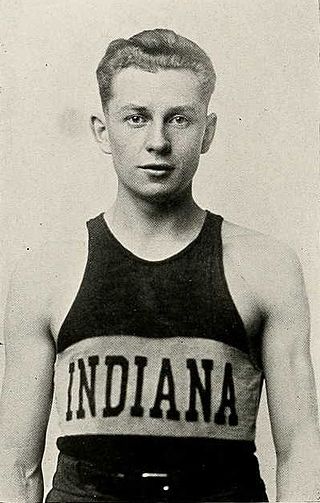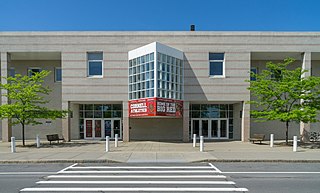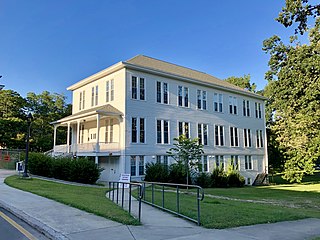Related Research Articles

James Naismith was a Canadian-American physical educator, physician, Christian chaplain, and sports coach, best known as the inventor of the game of basketball. After moving to the United States, he wrote the original basketball rule book and founded the University of Kansas basketball program in 1898. Naismith lived to see basketball adopted as an Olympic demonstration sport in 1904 and as an official event at the 1936 Summer Olympics in Berlin, as well as the birth of the National Invitation Tournament (1938) and the NCAA Tournament (1939).

Everett Sterling Dean was an American college basketball and baseball coach.
Henry G. "Dutch" Dehnert was an American basketball player whose career lasted from 1915 to 1935.

John W. Bunn was an American basketball coach and key contributor to the game of basketball. The Wellston, Ohio native played three seasons under coach Phog Allen at University of Kansas while earning his bachelor's degree (1917–21). He later became an assistant to Allen for nine seasons (1921–30). His In 1930, he became men's basketball head coach at Stanford University, where he coached college all-time great Hank Luisetti. His 1936–37 team finished the season with a 25–2 record and was retroactively named the national champion by the Helms Athletic Foundation and the Premo-Porretta Power Poll. After he left Stanford, Bunn went on to coach Springfield College (1946–56) and Colorado State College (1956–63).

Everett F. Shelton was an American basketball coach in the 1940s and 1950s. Shelton played quarterback for the Phillips University football team. The Cunningham, Kansas native coached 46 years at the high school, college and Amateur Athletic Union (AAU) levels and compiled an 850–437 record. He is mostly known for coaching the Wyoming Cowboys men's basketball team from 1939 to 1959. While at Wyoming, Shelton had a record of 328 wins and 201 losses for a .620 winning percentage. He guided the Cowboys to eight Mountain States / Skyline Conference championships and seven NCAA Tournament appearances. During his career, he was President of the National Association of Basketball Coaches. He was elected to the Naismith Memorial Basketball Hall of Fame in 1980.
Notre Dame Fieldhouse was a 4,000-seat multi-purpose arena in Notre Dame, Indiana. It opened in 1898, and was demolished in 1983. A monument marks the site.
David Tobey was an American basketball referee. He refereed many notable pro games in New York between 1918 and 1925. In 1926 he refereed the Syracuse vs. West Point game, which featured two future Hall of Famers, Vic Hanson and John Roosma. After that game he became popular and refereed many important games from 1926 to 1945, such as the first game with a three-man officiating crew. After retirement from officiating, he became basketball coach at Cooper Union in New York City. He was enshrined in the Basketball Hall of Fame in 1961.

Byron Wright "By" Dickson was an American football player and coach of football, basketball, and baseball. He served as the head football coach at Colby College (1898), Gettysburg College (1900), the University of South Carolina (1901), Lehigh University (1906–1909), Bucknell University (1910–1913), Scott High School (1917), and Franklin & Marshall (1919). Dickson was also the head baseball coach at Lehigh (1909–1910), Bucknell (1911–1913), and Franklin & Marshall (1920), amassing a career college baseball record of 45–53. In addition, he served as the head basketball coach at Franklin & Marshall during the 1919–20 season, tallying a mark of 7–6.

Frank Earl Hering was an American football player and coach of football, basketball, and baseball. He served as the head football coach at the University of Notre Dame from 1896 to 1898, compiling a record of 12–6–1 Hering was also the first basketball coach at Notre Dame, coaching one season in 1897–98, and helmed the school's baseball team for three seasons, from 1897 to 1899.

The Cornell Big Red men's basketball team represents Cornell University, located in Ithaca, New York, in NCAA Division I men's competition. The Big Red's appearance in the 2008 NCAA Tournament was their first trip to "The Big Dance" since 1988, ending a 20 year absence from the tournament. The team has reached the NCAA Division I men's basketball tournament five times, in 1954, 1988, 2008, 2009, and 2010. Cornell’s best finish in the NCAA tournament occurred in 1954 and 2010 when they advanced to the Sweet 16. Jon Jaques is the current head coach.

The 1898–99 Kansas Jayhawks men's basketball team represented the University of Kansas in its first season of collegiate basketball. The head coach was James Naismith, the inventor of the game, who served his 1st year. The Jayhawks, who were not a member of a conference, finished the season 7–4.
The Syracuse Orange women's basketball program is an intercollegiate women's basketball team representing Syracuse University. The program is classified in the NCAA's Division I, and the team competes in the Atlantic Coast Conference. The Orange play their home basketball games at the Carrier Dome in the University Hill neighborhood of Syracuse, New York. The team is coached by Felisha Legette-Jack.

The 1898–99 Wisconsin Badgers men's basketball team represented University of Wisconsin–Madison. Wisconsin Badger basketball began in December 1898 with the formation of its first team coached by Dr. James C. Elsom. The team played their home games at the Red Gym in Madison, Wisconsin and was a member of the Western Conference.

The Ark is a building on the East Campus of Duke University in Durham, North Carolina. It serves as an instructional and rehearsal studio for the Duke Dance Program. Built in 1898 as Angier B. Duke Gymnasium, The Ark became the first home for the Duke Blue Devils men's basketball team, then known as Trinity College, in 1906. The team moved after the 1923 season, upon the completion of Alumni Memorial Gymnasium. The Ark's current name is derived from the narrow walkway that was originally used to reach the building, forcing people to enter "two-by-two".

In 1897 men's basketball is introduced at Michigan State Normal School. The inaugural team went 2–1. 1897–98 was the first season of basketball at the school, which would become Eastern Michigan University Eagles men's basketball team. L.P. Whitcomb was elected the basketball manager at the same meeting that basketball became an official school sport.
The Oregon State Beavers women's basketball team is the official women's basketball team of Oregon State University in Corvallis, Oregon. They are one of ten varsity women's sports at OSU. They are a member of the Pac-12 Conference and the National Collegiate Athletic Association (NCAA). The team's home venue is Gill Coliseum and their official colors are orange and black. The Beavers have made 12 appearances in NCAA Tournaments, most recently in 2021. The current head coach is Scott Rueck, assisted by Jonas Chatterton, Brian Holsinger, and Katie Faulker.
The 1898–1899 Penn State Nittany Lions basketball team represented Penn State University during the 1898–99 college men's basketball season. The team finished with a final record of 2–3.
The 1898–99 Washington Huskies men's basketball team represents the University of Washington during the 1898–99 college men's basketball season.
The 1898–99 Michigan State Spartans men's basketball team represented Michigan State University during the 1898–99 college men's basketball season. The season marked the school's first season. There was no official coach for the team, and the team finished the season with an overall record of 0–2.
The 1898–99 Nebraska Cornhuskers men's basketball team represented the University of Nebraska during the 1898–99 collegiate men's basketball season. The head coach was Frank Lehmer, coaching the huskers in his third season. The team played their home games at Grant Memorial Hall in Lincoln, Nebraska.
References
- ↑ Official Basket Ball Rules. A. G. Spalding & Bros. 1898–1899. p. 82.